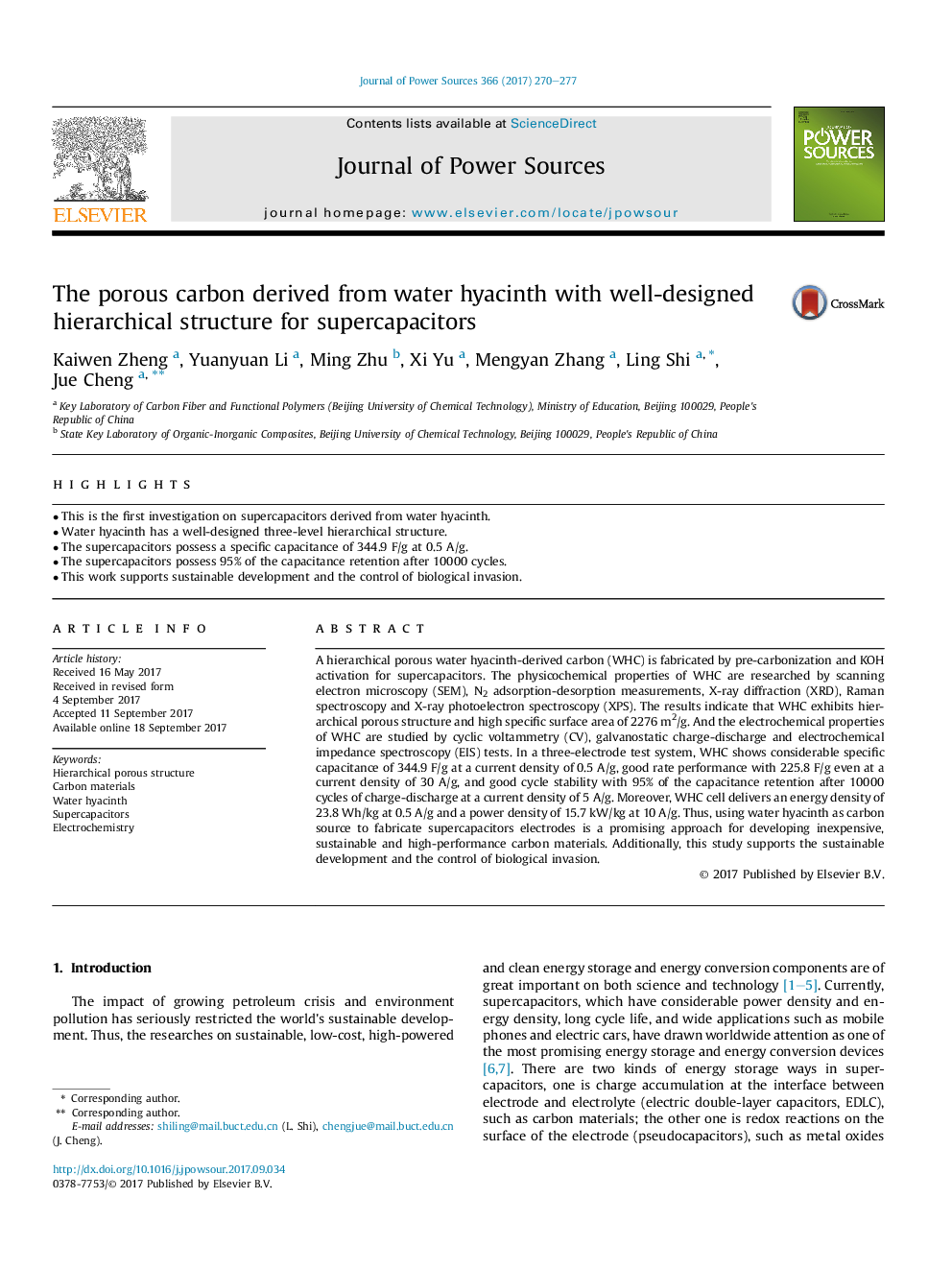| Article ID | Journal | Published Year | Pages | File Type |
|---|---|---|---|---|
| 5148948 | Journal of Power Sources | 2017 | 8 Pages |
Abstract
A hierarchical porous water hyacinth-derived carbon (WHC) is fabricated by pre-carbonization and KOH activation for supercapacitors. The physicochemical properties of WHC are researched by scanning electron microscopy (SEM), N2 adsorption-desorption measurements, X-ray diffraction (XRD), Raman spectroscopy and X-ray photoelectron spectroscopy (XPS). The results indicate that WHC exhibits hierarchical porous structure and high specific surface area of 2276Â m2/g. And the electrochemical properties of WHC are studied by cyclic voltammetry (CV), galvanostatic charge-discharge and electrochemical impedance spectroscopy (EIS) tests. In a three-electrode test system, WHC shows considerable specific capacitance of 344.9Â F/g at a current density of 0.5 A/g, good rate performance with 225.8Â F/g even at a current density of 30 A/g, and good cycle stability with 95% of the capacitance retention after 10000 cycles of charge-discharge at a current density of 5 A/g. Moreover, WHC cell delivers an energy density of 23.8Â Wh/kg at 0.5 A/g and a power density of 15.7Â kW/kg at 10 A/g. Thus, using water hyacinth as carbon source to fabricate supercapacitors electrodes is a promising approach for developing inexpensive, sustainable and high-performance carbon materials. Additionally, this study supports the sustainable development and the control of biological invasion.
Related Topics
Physical Sciences and Engineering
Chemistry
Electrochemistry
Authors
Kaiwen Zheng, Yuanyuan Li, Ming Zhu, Xi Yu, Mengyan Zhang, Ling Shi, Jue Cheng,
